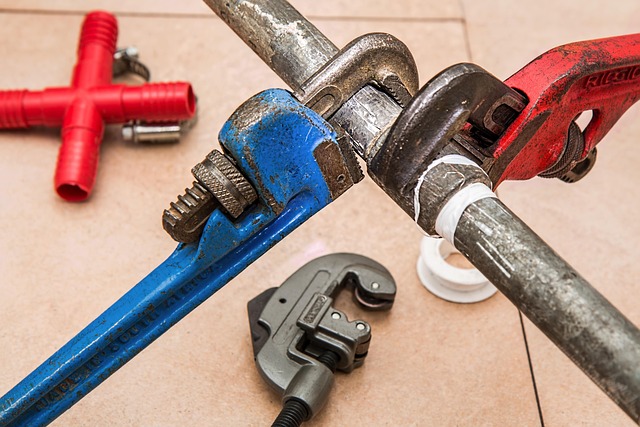Basement cracks, from stem wall vertical cracks to horizontal hairlines, are caused by various factors like uneven terrain, settling, or temperature changes. Identifying crack types is crucial for effective repair. Regular inspections prevent severe foundation problems. Severity determines the repair method, from epoxy injections for minor cracks to professional techniques like bracing for severe cases. Safety and proper materials are vital for stem wall repairs. Using hydro-insulating foam or flexible sealants, along with mesh tape for wider cracks, ensures structural integrity. DIY is suitable for minor cracks but complex issues require professional Stem Wall Repair to maintain basement stability and prevent further damage.
Basement cracks can range from mere aesthetics to serious structural issues, especially in stem walls. Understanding crack types and causes is the first step towards effective repair. This guide covers everything from identifying damage, choosing safety-compliant materials, and DIY step-by-step fixes for stem wall cracks, to advanced techniques and common mistakes to avoid. Learn how to maintain your basement and know when professional intervention is needed for complex structural problems.
Understanding Basement Crack Types and Causes

Basement cracks can vary in type and cause, each requiring a specific approach for repair. Stem wall cracks, for instance, are common in basements built on uneven terrain or with poor foundation support. These vertical cracks often extend from the floor to the ceiling and can be caused by settling, earth movement, or structural issues. Another type is hairline cracks, usually horizontal or diagonal, which typically result from thermal expansion and contraction due to changes in temperature and humidity levels.
Identifying the crack type and its underlying cause is crucial for effective stem wall repair. While some minor cracks might stabilize on their own, more severe cases may indicate deeper foundation problems that need professional attention. Regular inspection and addressing cracks early can prevent further damage and costly repairs down the line.
Assessing the Extent of Stem Wall Damage

When assessing basement crack repair, especially for stem wall damage, understanding the extent of the issue is crucial. Begin by inspecting the cracks themselves—their length, width, and pattern. Are they mere hairline fractures or wide enough to accommodate a finger? Note any signs of displacement or leaning in the walls. Stem walls, which support the foundation and upper structure, often require meticulous repair due to their structural significance.
In many cases, minor cracks can be addressed with simple injection methods using epoxy or polyurethane. However, for more severe damage, including large cracks or those indicative of settlement issues, professional stem wall repair techniques might be necessary. This could involve bracing, shimming, or even partial replacement of the damaged sections to ensure stability and prevent further deterioration.
Preparing for Repair: Safety Measures and Materials

Before beginning any basement crack repair, especially for stem wall repair, prioritize safety and gather the necessary materials. Put on protective gear, including gloves, safety glasses, and a dust mask, to shield yourself from debris and potential hazards. Ensure adequate ventilation in the basement to prevent the buildup of toxic gases during the repair process.
For stem wall repair, you’ll need specific tools and materials such as an epoxy injection kit (including epoxy resin and hardener), hydraulic cement, a trowel, a drill with a hammerhead bit, and sandpaper. These items will enable you to effectively assess and fix cracks in your basement’s stem walls, ensuring structural integrity and longevity.
Step-by-Step Guide to Fixing Cracks in Stem Walls

Fixing cracks in stem walls is a crucial step for maintaining your basement’s structural integrity and preventing further damage. Here’s a step-by-step guide to tackling this common home repair. Start by assessing the crack, ensuring it’s not caused by active water leaks or settling, which might require professional intervention. Next, clean the area around the crack using a wire brush to remove any loose debris, ensuring a clean surface for application.
Apply an appropriate stem wall repair product, such as a hydro-insulating foam or a flexible sealant, following the manufacturer’s instructions. For wider cracks, consider using a mesh reinforcement tape before filling. Once applied, smooth the material and allow it to dry or cure according to the product’s guidelines. After the repair has hardened, inspect the area for any signs of further cracking, addressing them promptly to maintain the structural health of your basement.
Advanced Techniques for Long-Lasting Repairs

In the realm of basement crack repair, advanced techniques have emerged as game-changers, offering long-lasting solutions that go beyond conventional methods. One such innovative approach is Stem Wall Repair, which targets structural cracks in foundations with precision and effectiveness. By addressing the root cause, this technique involves reinforcing the stem wall, a critical component of the basement’s structural integrity. It ensures stability and prevents future cracks from forming or expanding.
Stem Wall Repair utilizes modern materials and specialized equipment to create a robust support system within the crack, filling and strengthening it from within. This method is particularly beneficial for extensive crack networks, providing both short-term solutions and long-lasting repairs that can withstand the test of time. In today’s digital era, professionals employ advanced technologies to accurately assess and plan these repairs, ensuring every intervention is tailored to the specific needs of each basement.
Common Mistakes to Avoid During Basement Crack Repair

When it comes to basement crack repair, there are several common mistakes that homeowners often make, which can lead to further damage and costly repairs down the line. One of the biggest blunders is trying to fix the issue yourself if the cracks are structural in nature. Stem wall repair, a critical component of basement integrity, requires professional expertise to ensure proper alignment and stability. Attempting a DIY approach could compromise the structural integrity of your home.
Another mistake is neglecting to address the root cause of the cracks. Water intrusion, settlement, or changes in humidity levels can all contribute to basement cracks. Effective repair involves identifying and rectifying these underlying issues to prevent future damage. Using subpar materials or incorrect sealing techniques can also lead to problems. It’s crucial to opt for high-quality products and follow industry standards for the best long-term results.
Maintenance Tips for Preventing Future Cracks

Regular maintenance is key to preventing future basement cracks, especially around stem walls. One effective tip is to inspect your basement regularly for any signs of damage or moisture issues. Addressing these problems early can prevent more serious cracks from forming. Additionally, ensuring proper drainage around your home by clearing debris from gutters and downspouts, and grading the soil away from your foundation, will reduce hydrostatic pressure on your stem walls.
Another important maintenance practice is to keep humidity levels in check. High moisture content in the air can contribute to cracking by expanding and contracting the concrete or masonry. Using dehumidifiers or ventilating systems can help maintain optimal humidity levels. Furthermore, sealing any existing cracks with a high-quality epoxy injection or hydraulic cement will strengthen your stem walls and provide a protective barrier against future damage.
When to Call a Professional for Complex Issues

If you’re noticing minor cracks in your basement walls, you might be wondering if DIY methods are a viable solution. While small cracks can often be addressed with home remedies or over-the-counter products, there comes a point where issues escalate and professional intervention is necessary. Complex crack repair scenarios typically involve structural damage, especially when cracks extend beyond 1/4 inch wide or show signs of expansion.
Stem wall repair is one such complex issue that requires expert attention. Stem walls support the foundation and ceiling, making them critical for the overall stability of your basement. Any damage to these walls can compromise the integrity of your entire structure. In such cases, it’s crucial to contact a professional who specializes in basement crack repair to assess the situation accurately and provide long-lasting solutions like stem wall repair to ensure the safety and durability of your home.
